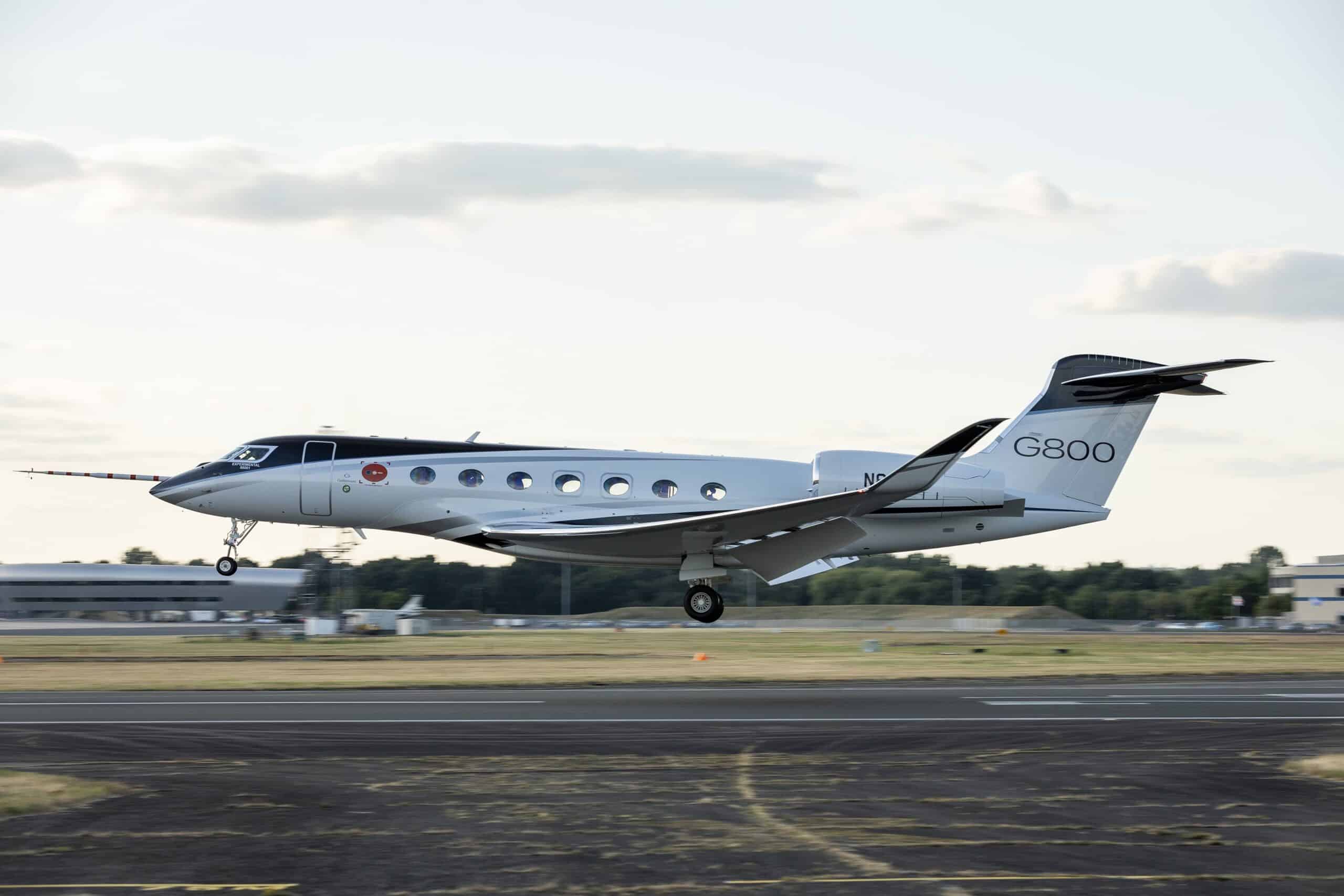Aerospace
Gulfstream G800 makes First International Flight.
Gulfstream Aerospace Corp. revealed today that the brand-new Gulfstream G800 made its first international flight only a few weeks after the aircraft’s initial flight.

Gulfstream Aerospace Corp. revealed today that the brand-new Gulfstream G800 made its first international flight only a few weeks after the aircraft’s initial flight. In order to support Gulfstream’s participation at the Farnborough International Airshow, the G800 flew from Savannah to the Gulfstream Customer Support centre in Farnborough, England. On June 28, the G800 made its maiden flight. Shortly after, the Gulfstream flight test team completed additional testing requirements, including a long-duration flight of more than eight hours and operations above the aircraft’s maximum operating speed and cruise altitude of Mach 0.925 and 51,000 feet/15,545 metres, respectively.
Mark Burns, president of Gulfstream, noted that the G800’s transatlantic journey so soon after first flight was remarkable. “We are able to fly the G800 with exceptional efficiency and bring the aircraft directly to customers early in the flight test programme, as we have at Farnborough, because of our strategic planning and the investments Gulfstream has made in our new aircraft programmes. It’s appropriate that the G800’s international debut took place in the Gulfstream Farnborough Service Center, one of our newest and most advanced facilities.
The Gulfstream Farnborough Service Center has more than 200 employees and 30 international regulatory certifications since it opened in the summer of 2020. Up to 13 of Gulfstream’s bigger aircraft, including the G650ER, G700, and G800, can be housed in the 225,000 square foot/20,903 square meter facility, which also provides aftermarket modifications and maintenance, repair, and overhaul services.
The G800 is the longest-range business aircraft in the market, with a range of 8,000 nautical miles (14,816 km) at Mach 0.85 and 7,000 nm (12,964 km) at Mach 0.90. It has the Gulfstream Symmetry Flight Deck, which uses the most touch-screen technology in the market and has active-control side sticks. The G800 cabin can be set up with up to four living spaces that can accommodate up to 19 passengers and 10 people in beds. The G800 has the lowest cabin height in the sector, plasma ionization purification, and 100% fresh, never recirculated air as additional features.

Aerospace
Boeing Transfers Rocket Stage to NASA, Paving Way for Human Moon Mission

Boeing has achieved a significant milestone by providing NASA with the second core stage of the Space Launch System (SLS) rocket.
This crucial component, crafted at NASA’s Michoud Assembly Facility (MAF), is set to propel the Artemis II crew into lunar orbit, marking humanity’s return to deep space after a 50-year hiatus.
The monumental Boeing-built rocket stage, the largest element of the Artemis II mission, will embark on a journey aboard the Pegasus barge, traveling 900 miles to NASA’s Kennedy Space Center.
Comparison of two legendary aircraft B777x vs B747 aircraft:Click here
Upon arrival, it will be meticulously integrated with other essential Artemis II components, including the upper stage, solid rocket boosters, and NASA’s Orion spacecraft within the iconic Vehicle Assembly Building. This intricate integration process is a vital step toward the eagerly anticipated Artemis II launch, slated for 2025.
“Boeing-built products helped land humankind on the moon in 1969, and we’re proud to continue that legacy through the Artemis generation,” remarked Dave Dutcher, vice president and program manager for Boeing’s SLS program. “Together, with NASA and our industry partners and suppliers, we are building the world’s most capable rocket and paving the way to deep space through America’s rocket factory in New Orleans.”
NASA, Lockheed Martin Reveal X-59 Quiet Supersonic Aircraft:Click here
The delivery of Core Stage 2 marks a significant achievement in the evolution of the SLS rocket. Towering over 200 feet and powered by four RS-25 engines, this core stage, coupled with two solid-fueled booster rockets, will generate a staggering 8.8 million pounds of thrust. This immense power is crucial to launching Artemis II and future missions into the vast expanse of space.
The SLS rocket stands unparalleled in its capability to transport both crew and substantial cargo to the moon and beyond in a single launch. Its extraordinary capacity will facilitate the delivery of human-rated spacecraft, habitats, and scientific missions to destinations including the moon and Mars, ushering in a new era of space exploration.
-

 Travel1 week ago
Travel1 week agoAir India to Expand US Operations with Three New Routes After a Decade
-

 Travel2 weeks ago
Travel2 weeks agoWhy We Should Avoid These Stamps in a Passport
-

 Airlines1 month ago
Airlines1 month agoInvestigations Reveal Fake Chinese Titanium in Boeing and Airbus Jets
-

 Tech4 weeks ago
Tech4 weeks agoChina’s CATL Plans 1,800-Mile Electric Plane Launch by 2027
-

 Airport3 days ago
Airport3 days agoTop 10 Largest Airports in the World by Size
-

 Aerospace4 weeks ago
Aerospace4 weeks agoChina’s Fighter Jets Turn Wings into Autonomous Drones
-

 Airlines4 days ago
Airlines4 days agoAir India Rolls Out A350s for Delhi-New York JFK and Newark Routes
-

 Defence3 weeks ago
Defence3 weeks agoBoeing Enhances Chinook with New Engines and Block II Upgrades at $96 Million







